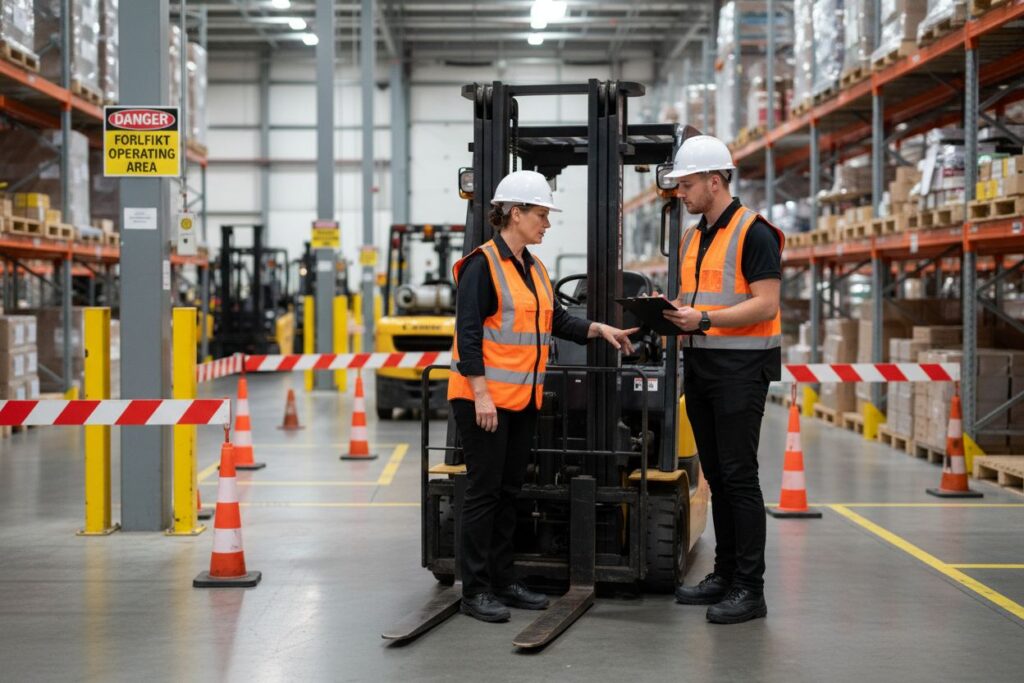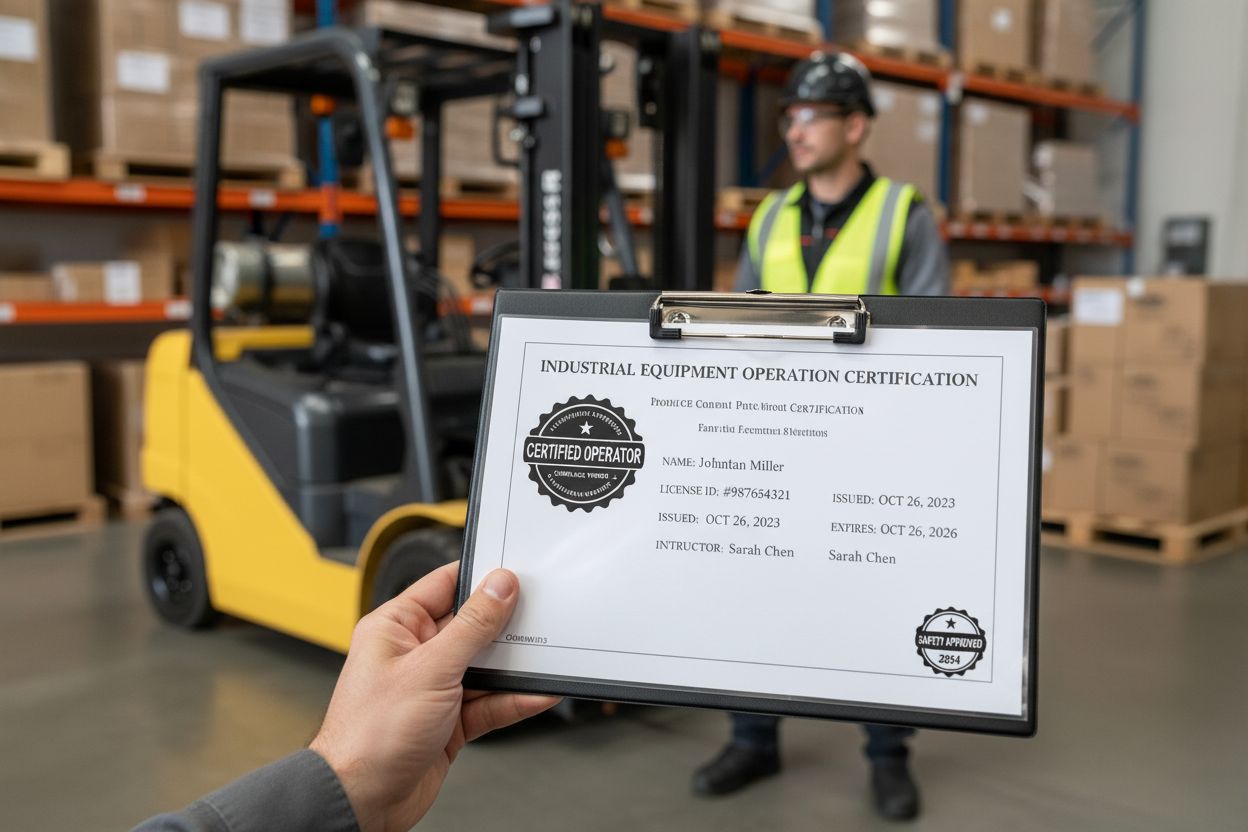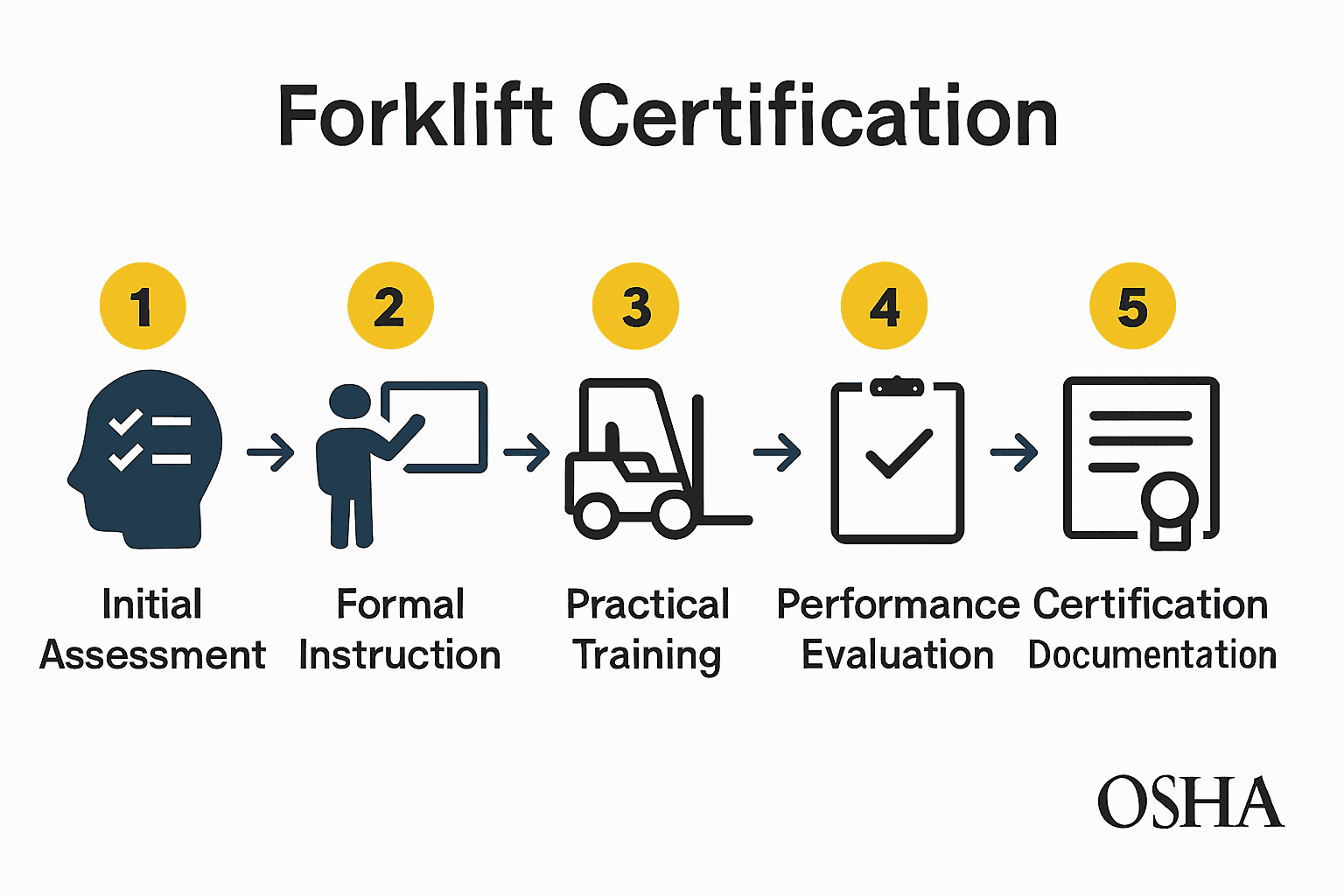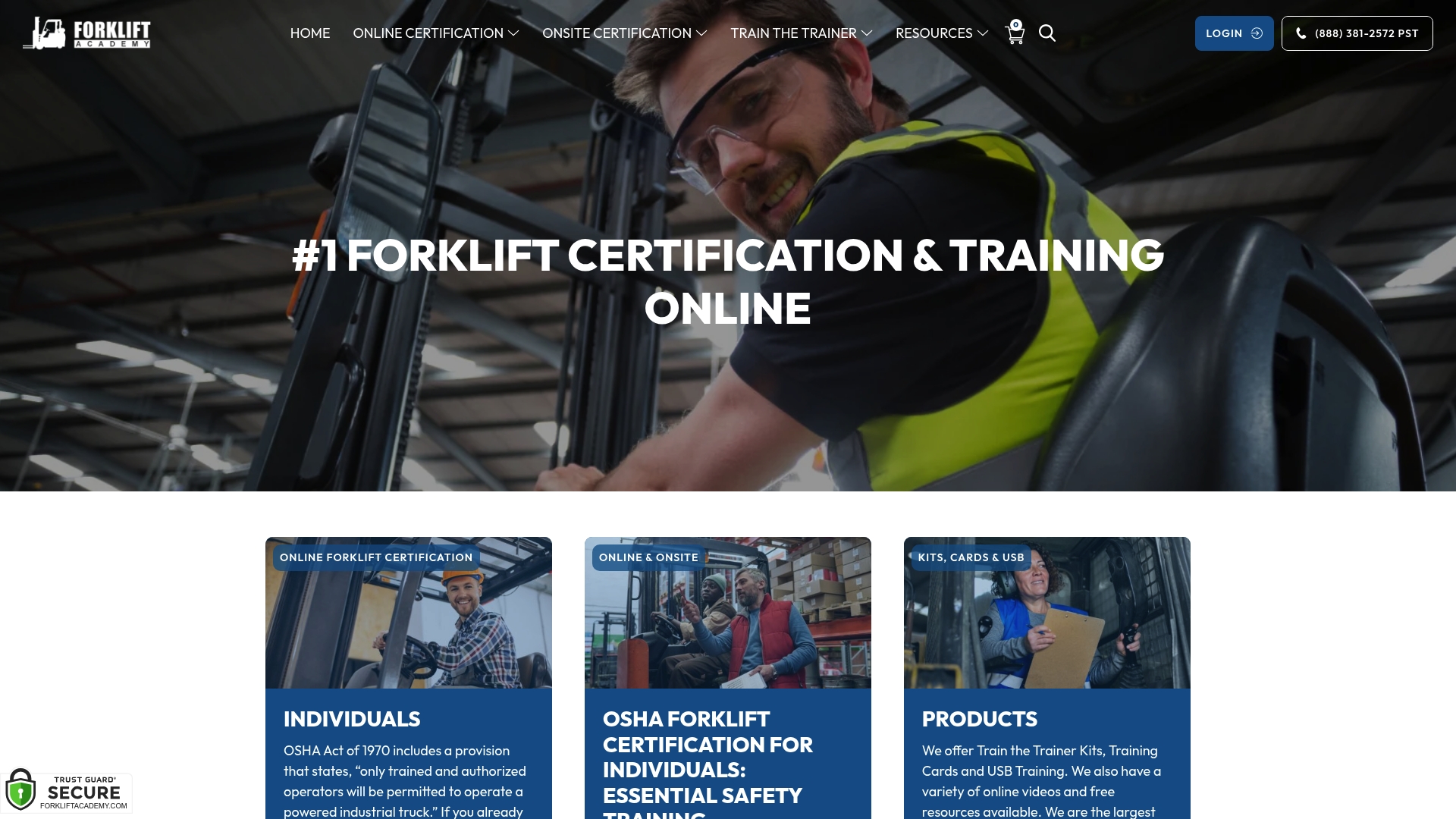
Over 7,000 forklift-related injuries occur each year in the United States alone, highlighting the crucial need for proper training and certification. Operating a forklift demands strong skills and clear knowledge of strict safety guidelines to protect both workers and equipment. Understanding what a forklift license covers helps operators and employers ensure a safer, more efficient work environment while meeting all legal and regulatory requirements.
| Point | Details |
|---|---|
| Forklift License Significance | A forklift license certifies an operator’s skills and safety awareness, ensuring compliance with OSHA guidelines for workplace safety. |
| Employer Responsibilities | Employers must provide tailored training, eliminate hazards, and maintain detailed certification records for operators. |
| Certification Process Steps | Obtaining a forklift certification involves an initial assessment, formal instruction, practical training, evaluation, and maintaining certification through periodic re-evaluations. |
| Common Operational Risks | Key risks include improper load handling, environmental awareness failures, and mechanical negligence, highlighting the importance of rigorous training and safety protocols. |
A forklift license represents far more than just a piece of paper—it’s a comprehensive certification of an operator’s competence, safety awareness, and technical skills in handling powered industrial trucks. According to OSHA’s official guidelines, this license signifies that an individual has successfully completed both formal instruction and practical training specific to powered industrial vehicle operation.
The certification process involves critical components that ensure workplace safety and operator proficiency. As outlined by OSHA, employers must train operators on several key aspects:
Critically, a forklift license isn’t a generic qualification but a tailored authorization that documents an operator’s demonstrated competence. Employers are legally responsible for creating formal documentation that includes precise details such as the operator’s name, training date, and the identity of the evaluator who certified their skills. This documentation serves as a legal record confirming that only trained and evaluated professionals are permitted to operate these powerful machines.

Learn more in our comprehensive guide on understanding forklift certification requirements, which breaks down the nuanced process of obtaining and maintaining your professional credentials.
Forklift licenses and equipment classifications are comprehensive systems designed to ensure operator safety and machine-specific competency. According to OSHA’s official guidelines, powered industrial trucks are categorized into seven distinct classes, each representing different equipment types and operational environments.
The primary equipment classes include:
Here’s a summary of the seven main forklift classes and their typical uses:
| Forklift Class | Power Source | Typical Use or Environment |
|---|---|---|
| Class I | Electric | Warehouses Indoor loading |
| Class II | Electric | Narrow aisles High stacking |
| Class III | Electric | Hand pallet movement Walkie riders |
| Class IV | Internal Combustion | Indoor Smooth surfaces |
| Class V | Internal Combustion | Outdoor Rough terrain |
| Class VI | Electric or Internal Combustion | Towing Material moving |
| Class VII | Internal Combustion | Construction sites Uneven ground |
Each class requires specific training and certification, reflecting the unique operational challenges and safety considerations of different equipment types. While these classifications are standard in the United States, international regulations can vary. For instance, some regions like Australia have additional nuanced licensing requirements for specialized equipment such as telehandlers, where machine weight and attachments determine specific certification needs.
Learn more about the different forklift types in our comprehensive guide, which provides detailed insights into equipment classifications and operational requirements.
OSHA’s regulatory framework for forklift operation is comprehensive and stringent, designed to protect workers and ensure workplace safety. According to OSHA standard 29 CFR 1910.178(l), employers must develop and implement robust training programs that go far beyond simple instruction.
The key legal requirements for forklift operator certification include:
Employers bear the legal responsibility of maintaining detailed certification records that document each operator’s training. These records must include critical information such as the operator’s name, specific training and evaluation dates, and the identity of the trainer who certified the individual’s competence. Failure to comply with these regulations can result in significant penalties and increased workplace safety risks.
Learn more about navigating OSHA compliance requirements with our comprehensive guide, which breaks down the complex legal landscape of forklift operator certification.
Forklift certification is a structured process that requires careful planning and comprehensive training. According to OSHA guidelines, the certification journey involves multiple critical stages designed to ensure operator competence and workplace safety.
The key steps to obtain forklift certification include:

Learn more about successfully navigating the forklift certification process with our complete guide, which provides in-depth insights into each critical step.
Workplace safety is a collaborative effort between employers and forklift operators, with clearly defined legal obligations for both parties. According to OSHA regulations, employers bear significant responsibility for creating and maintaining a safe working environment.
Key employer responsibilities include:
Operators, meanwhile, have critical rights and corresponding obligations:
The relationship between employers and operators is fundamentally about mutual protection. Employers must create safe conditions, while operators must actively participate in maintaining those safety standards. Any equipment modifications require careful documentation and manufacturer consultation to ensure continued operational safety.
Learn more about understanding forklift operator responsibilities in our comprehensive guide, which breaks down the nuanced legal landscape of workplace safety.
Forklift operations involve complex dynamics where seemingly minor errors can lead to significant safety risks and potential workplace accidents. While technological advancements are helping mitigate risks, human factors remain the most critical component in preventing operational mistakes.
Common operational risks include:
Improper Load Handling
Environmental Awareness Failures
Mechanical Negligence
Recent research suggests innovative technological solutions like low-power wireless IMU sensors can help detect and localize potential impact zones, significantly reducing collision risks in complex warehouse environments. These emerging technologies complement—but cannot replace—rigorous operator training and situational awareness.
Explore our comprehensive guide on avoiding common forklift operational mistakes to develop a proactive safety mindset that protects both personnel and equipment.
Are you feeling overwhelmed trying to navigate complex OSHA rules and wondering what it really takes to get your forklift license? If safety, compliance, and clear career paths matter to you, you are not alone. The article has highlighted the risks of uncertified operation, the headache of confusing regulations, and how crucial tailored training is to keeping your workplace accident-free. Now you can move from uncertainty to confidence with practical help just a click away. For an in-depth look at solutions tailored to your certification needs, start with our Forklift License Archives.

Do not risk your safety or compliance status by missing a single requirement. Join thousands who trust Forklift Academy for fast, easy, and respected forklift training. Explore our OSHA-compliant programs, practical onsite and online options, evaluation-only courses, and business solutions. Visit Forkliftacademy.com now to take the next step toward earning your forklift license, or dive into expert safety tips in our Forklift Safety Archives. Get certified and stay protected—choose the partner that puts your confidence first.
A forklift license is a certification that confirms an operator’s competence, safety awareness, and technical skills in handling powered industrial trucks, ensuring they meet OSHA guidelines.
To obtain forklift certification, you must complete an initial assessment, undergo formal instruction, participate in practical training, pass a performance evaluation, and receive certification documentation.
Common risks include improper load handling, environmental awareness failures, and mechanical negligence, which can lead to significant safety hazards and workplace accidents.
Forklift operators must undergo refresher training every three years or when specific conditions occur, such as demonstrating unsafe performance, introduction of new equipment, or significant changes in workplace conditions.